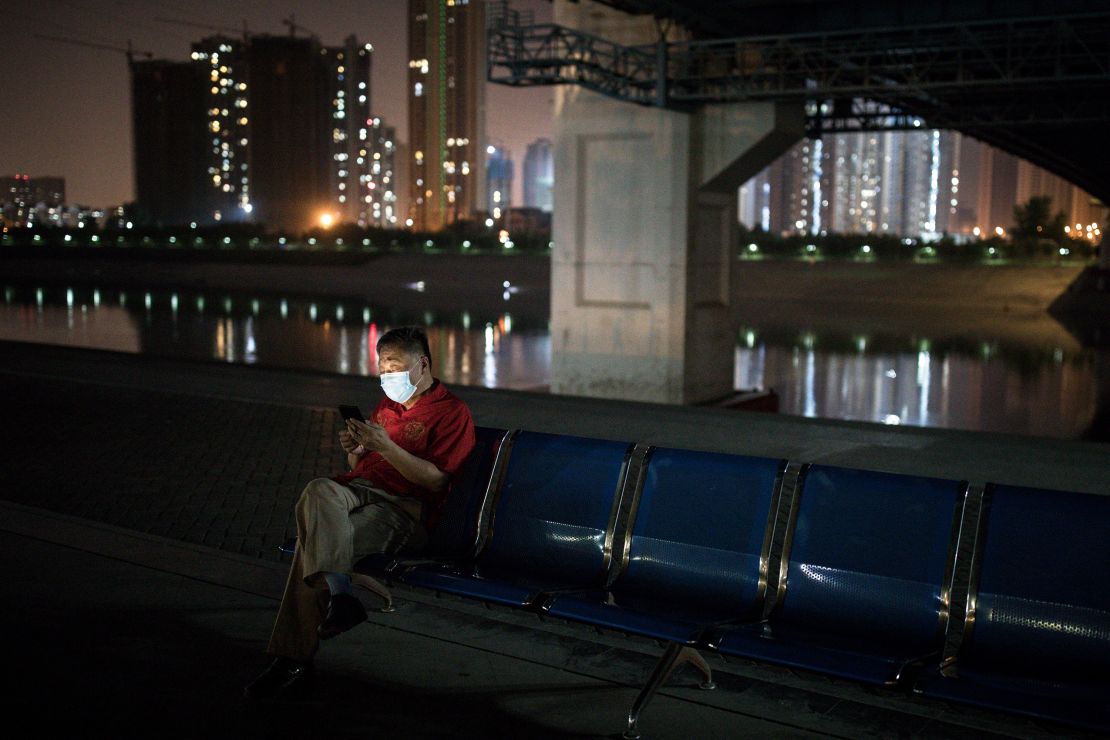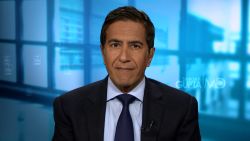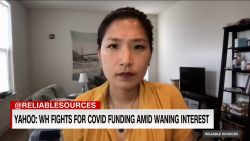The story of the coronavirus pandemic can be complicated and hard to follow, from how it started to the measures countries have taken to tackle its spread.
But the picture has become even more confused by a torrent of propaganda, unreliable theories and deliberate misinformation being pushed for a variety of reasons.
Increasingly, experts and government officials in the United States and Europe are accusing China — the country first hit by the virus — of stoking that confusion and trying to shape the narrative through its state-run broadcasters and publications, and on social media.
China is trying to push three main messages about the outbreak, according to Rod Wye, an associate fellow at the Chatham House think tank in London and former head of Asia research at the UK Foreign Office.
First, Beijing wants to spread its claims of being successful at controlling the virus, and show off the supplies and medical experts it is sending around the world. Second, it seeks to obscure the origins of the virus. According to Wye, the timeline of the “Chinese narrative begins with the lockdown in Wuhan and the resolute action of the party to control it,” not before.
“They are not at all keen on exploring the origins because that shows up real weaknesses in what they did,” he told CNN Business.
Third, Wye said, there is an attempt by Chinese officials to “sow confusion” about the way other countries have responded. That’s part of an effort, “to undermine the credibility of those who are critiquing China and to strengthen the credibility of the Chinese narrative,” he added.
Of course, China is not alone in spreading confusing and conflicting information about the virus. US President Donald Trump has shared dubious medical claims, unverified origin theories, and attacked state governors over coronavirus testing capabilities, comments that have been amplified by the megaphone of sympathetic media outlets such as Fox News.
But Beijing’s push on the coronavirus appears to be part of a broader effort in recent years to become more aggressive with its messaging abroad, both through traditional channels such as television networks, and through more targeted use of social media — even on platforms banned in China itself.
The effort has been heightened during a war of words between China and some Western governments over the coronavirus.
Trump and Secretary of State Mike Pompeo have said China could have done more to prevent the pandemic and suggested, without providing evidence, that the virus may have originated in a Wuhan laboratory. In an interview with Fox Business on Thursday, Trump threatened to cut off relations with China over its handling of the virus. In Australia, Prime Minister Scott Morrison has called for an “independent assessment of how this all occurred, so we can learn the lessons and prevent it from happening again.”
Chinese officials have lambasted “lies” that it said were fabricated by US politicians and media outlets to “shift the blame to China for their inadequate response to Covid-19.” One Chinese state media editor called Australia “chewing gum stuck to the sole of China’s shoes.”
China has also pushed back firmly against allegations that it is spreading misinformation. In an 11,000-word rebuke of US claims carried by state media over the weekend, the Chinese foreign ministry said “China has all along been open and transparent in information release.”
“Some US politicians, scholars and media outlets that are hostile to China have kept slandering and attacking China. China is a victim of disinformation,” the ministry said.
China: The hero in state media
One of the ways China spreads its message is through foreign language state-funded media outlets around the world, including newspapers such as the China Daily and Global Times, and television networks like China Global Television Network (CGTN).
The network, which says it has staff in more than 70 countries and in 2019 expanded in Europe by opening a 30,000 square foot London bureau, employs a mix of local and Chinese staff in all its offices. Like other state-owned outlets, CGTN broadcasts a mix of news about the pandemic, alongside content even some of its own staffers call “pure propaganda.”
A current employee and a former staffer at CGTN, who spoke to CNN Business on condition of anonymity for fear of retaliation, said that while they generally have freedom to report on some topics, others are considered off limits. And sometimes, the former staffer said, arguments between Western employees and their Chinese superiors would break out over segments about the Hong Kong protests or Uyghur detention camps in Xinjiang. (CGTN has been forced to register as a foreign agent in the United States and is currently under investigation by the UK media regulator for fairness and impartiality in its coverage of the Hong Kong protests).

“Their argument on coronavirus is they say China has been open and transparent. It’s the same political bullsh*t Donald Trump or [UK Prime Minister] Boris Johnson has done. Everyone lost the first month on this,” the current staffer, a journalist based in the United States, told CNN Business. “Of course the Chinese are more capable of covering stuff up and dripping out new details … but they’re so ham fisted when they do that they’re just awful.”
CGTN did not respond to requests for comment.
Straightforward reports about the number of cases or new treatments for the virus appear alongside glowing TV segments on China’s successful response to the virus and the aid it is sending around the world. Much of the recent coverage about any supposed Chinese failures has focused on criticism from other countries and how Chinese officials are pushing back.
Wye said Chinese state media doesn’t just push “simple propaganda” but instead mixes what Western audiences would consider normal reports with more biased segments, to make it more palatable to the outside world. For example, straight reporting on President Xi Jinping’s remarks about fighting the coronavirus will be carried as well as glowing pieces about his mother and childhood.
“If [the Chinese media] is going to be at all influential it has to be tailored to the society they are trying to get the message to,” Wye said. “What they want to do is increasingly both put a strong positive narrative for China and also to reduce or weaken the credibility of reports that are less than complimentary about what is happening in China.”
Questioning the origins on social media
On social media, a more sinister approach to news about China and the coronavirus has been underway for weeks. Messages questioning the origins of the virus, some even suggesting it was created by the United States, have been pushed online by some Chinese officials, and then repeated by Chinese state media.
A tweet from the Chinese embassy in South Africa cast doubt on the notion that the virus started in China.
And Zhao Lijian, a senior spokesperson in China’s ministry of foreign affairs, has become infamous for his aggressive comments on Twitter (TWTR), which is banned in China.
In a March tweet, he suggested that the US army may have brought the virus to Wuhan, a conspiracy theory that has caused an army reservist from Virginia to become the target of online smear campaigns and attacks. The reservist was in Wuhan last October as part of a US military athletics team.
Zhao’s tweet caused US officials to summon China’s ambassador to the State Department.
The Chinese foreign ministry has defended Zhao’s tweets.
“If you keep picking on him just for citing this word ‘might,’ then how about the US President, Vice President, Secretary of State, the State Department spokesperson and some lawmakers, who falsely accused that the virus came from lab in Wuhan, saying the virus was man-made or leaked? Have you ever questioned them?,” Chinese Foreign Ministry spokesman Hua Chunying asked reporters at a press briefing last week.
US reporters have challenged the Trump administration about that claim and have been given no evidence to support it.
But it’s not just the US administration that’s pointing fingers.
A report by the European Union’s External Action Service released last month found that China and Russia “have continued to widely target conspiracy narratives and disinformation both at public audiences in the EU and the wider neighborhood.” The report also found “evidence of a coordinated push by official Chinese sources to deflect any blame for the outbreak of the pandemic.”
EU officials had to deny reports by several outlets that the wording of its investigation had been softened after pressure from China. A few days later, EU officials admitted that they allowed the Chinese government to censor an opinion piece by EU ambassadors to China published in the China Daily, removing a reference to the origin of the coronavirus outbreak and its subsequent spread worldwide.
“The whole point of this kind of disinformation is it’s not just the credibility, it’s everybody’s credibility that is undermined by all this so that it is very difficult then to establish a clear exposition of how this all started,” said Chatham House’s Wye.
Muddying the waters
The US State Department said it has found evidence that a network of Chinese operatives have spread coronavirus misinformation online about the origins of the virus and the United States’ response.
Last month, US intelligence agencies assessed that Chinese operatives helped push inaccurate messages about the US response to the pandemic across social media and text platforms, including one that said President Trump was issuing a nationwide lockdown.
Lea Gabrielle, head of the State Department’s Global Engagement Center — which coordinates efforts to expose foreign disinformation and propaganda — told reporters last week that Chinese government-linked social media accounts have spread questionable “concerns” about US-funded bio safety labs in the former Soviet Union, “mainly to try to take attention away from concerns about the labs in Wuhan.”
Other Chinese government-linked accounts have pushed “positive messages” on Beijing’s coronavirus response, she said, “to convey that only the [People’s Republic of China’s] handling of the crisis is a model for others and that the PRC is superior.”
Gabrielle said her team has found evidence that these efforts are supported by a network of inauthentic coordinated accounts on Twitter.
The social media platform told CNN last week its initial review of a portion of the accounts flagged by the State Department does not support such claims. According to Twitter, numerous accounts belong instead to government entities, nongovernmental organizations, and journalists.
In response to the State Department’s allegations, Chinese foreign ministry spokesman Zhao highlighted Twitter’s response and told reporters on Wednesday that “China is always opposed to creating and disseminating false information. Reports that claim China has been spreading disinformation on Twitter are groundless.”
Questionable success
China’s coronavirus campaign appears to have had mixed success so far.
A poll in Italy released last month found that for the first time Italians are looking more to China than to the United States as a potential international partner.
But Chinese state media have had paid-content insert deals canceled by influential papers. A spokesperson for The New York Times told CNN Business it has stopped running the advertisements that are meant to look like news articles.
The UK’s Telegraph has also stopped taking such pieces and has deleted them from its website, according to The Guardian, including a piece headlined “Why are some framing China’s heroic efforts to stop coronavirus as inhumane?” The Telegraph did not respond to a request for comment.
A survey conducted by Pew in March and published last month found that about two-thirds of Americans now have a negative opinion of China, the highest percentage recorded since the research center began asking the question in 2005.
A think tank affiliated with China’s Ministry of State Security issued a report last month saying anti-China sentiment around the world is at its highest since the 1989 Tiananmen Square crackdown, according to Reuters.
Bill Bishop, the publisher of the Sinocism newsletter and a longtime observer of Chinese diplomacy, told CNN Business the Chinese have angered many western countries like Australia, France and the United States with the disinformation campaigns and the questionable theories floated by their diplomats.
“In some ways we should just let [the Chinese] talk and let the facts speak for themselves,” he said. “Right now China is really digging its own hole in many ways. Sometimes it’s better to just let people dig.”
Steven Jiang contributed reporting.


























